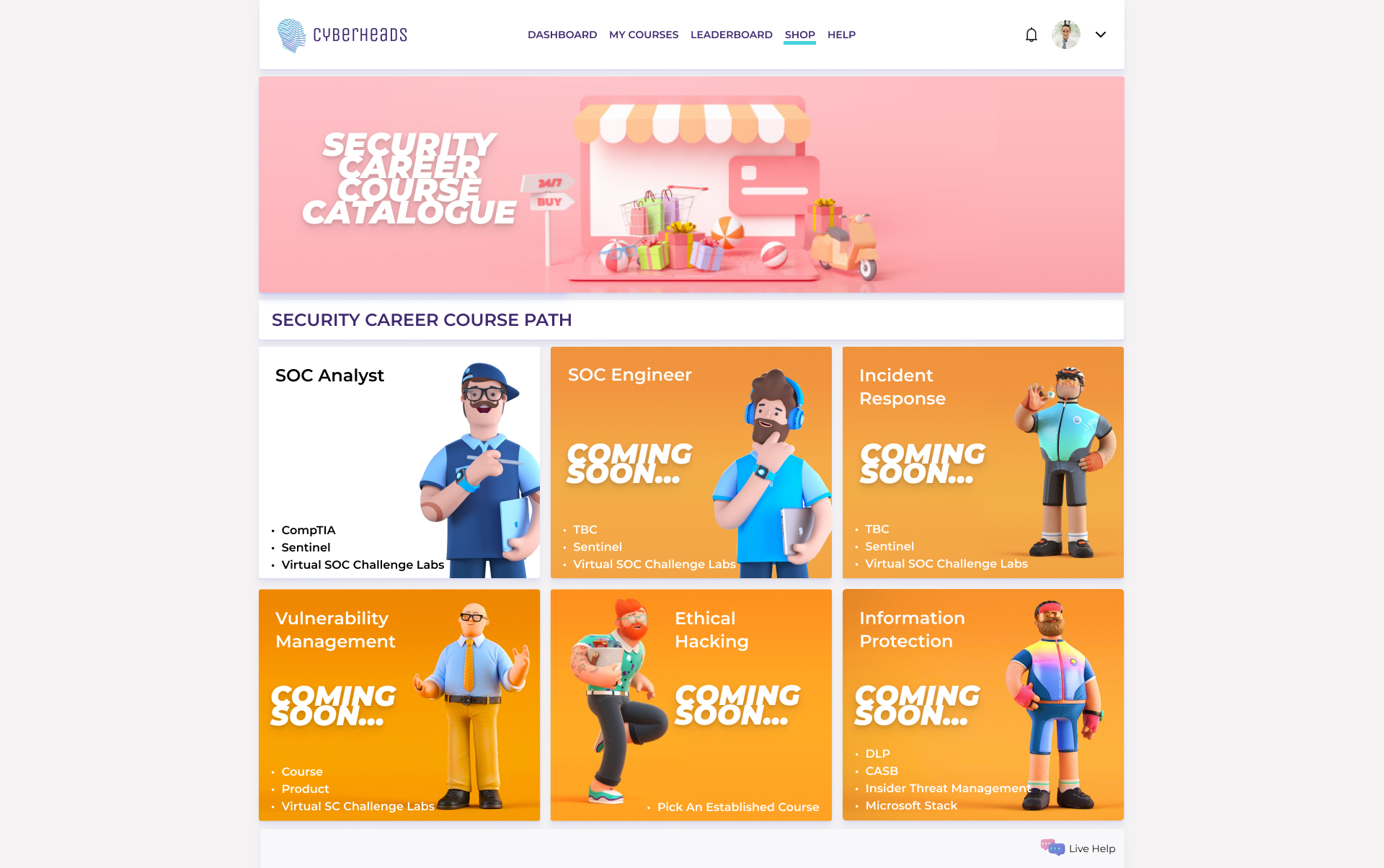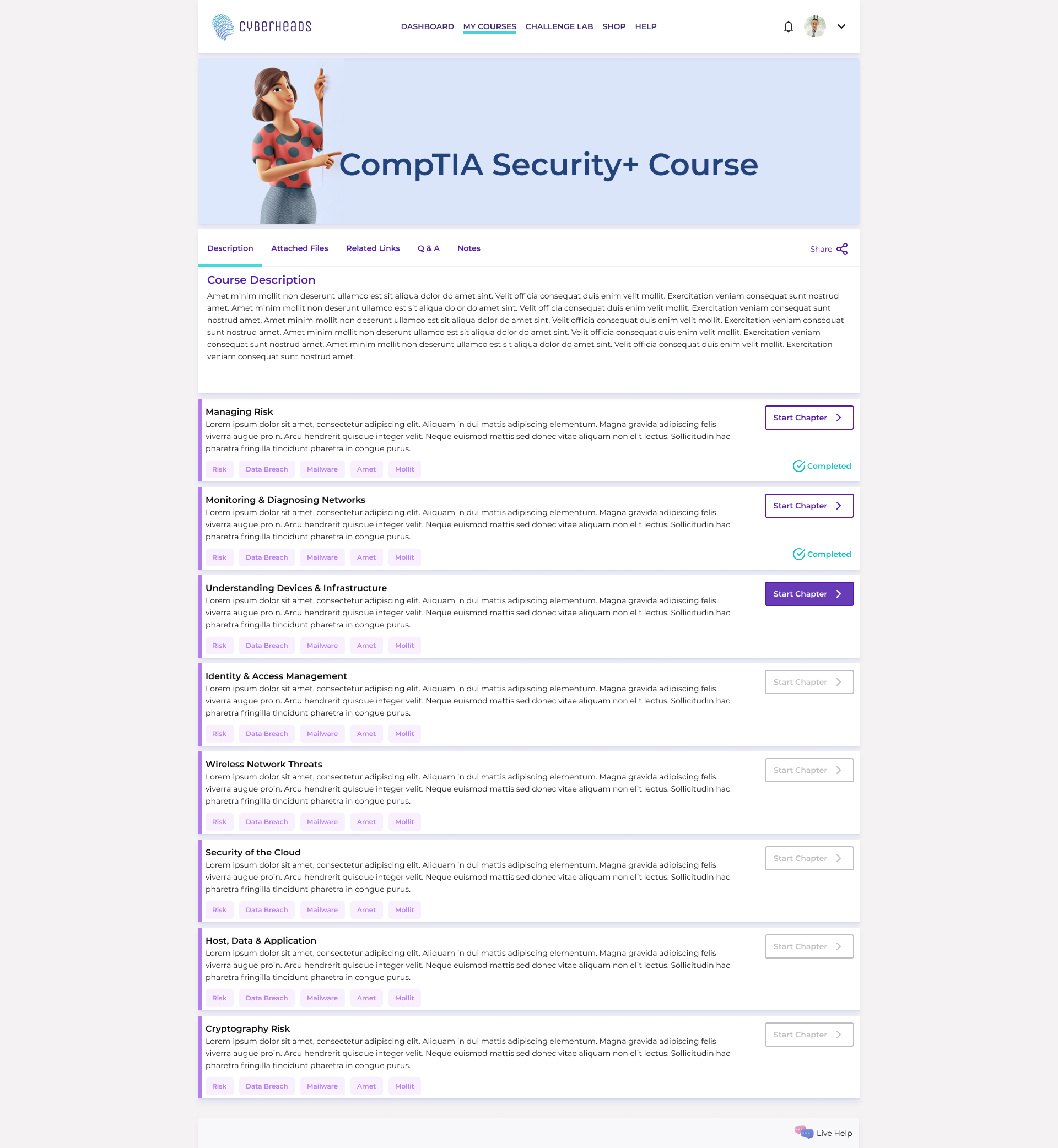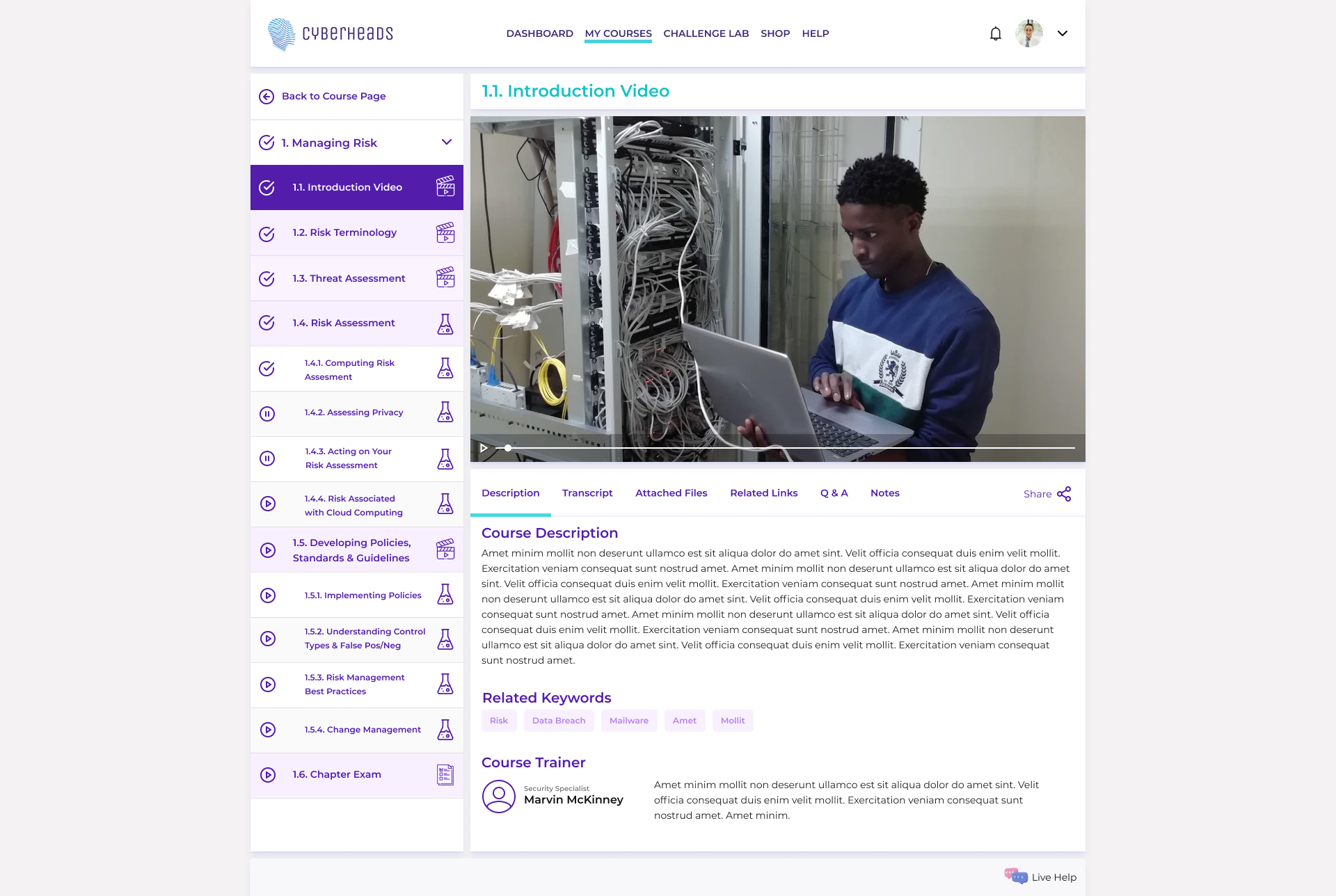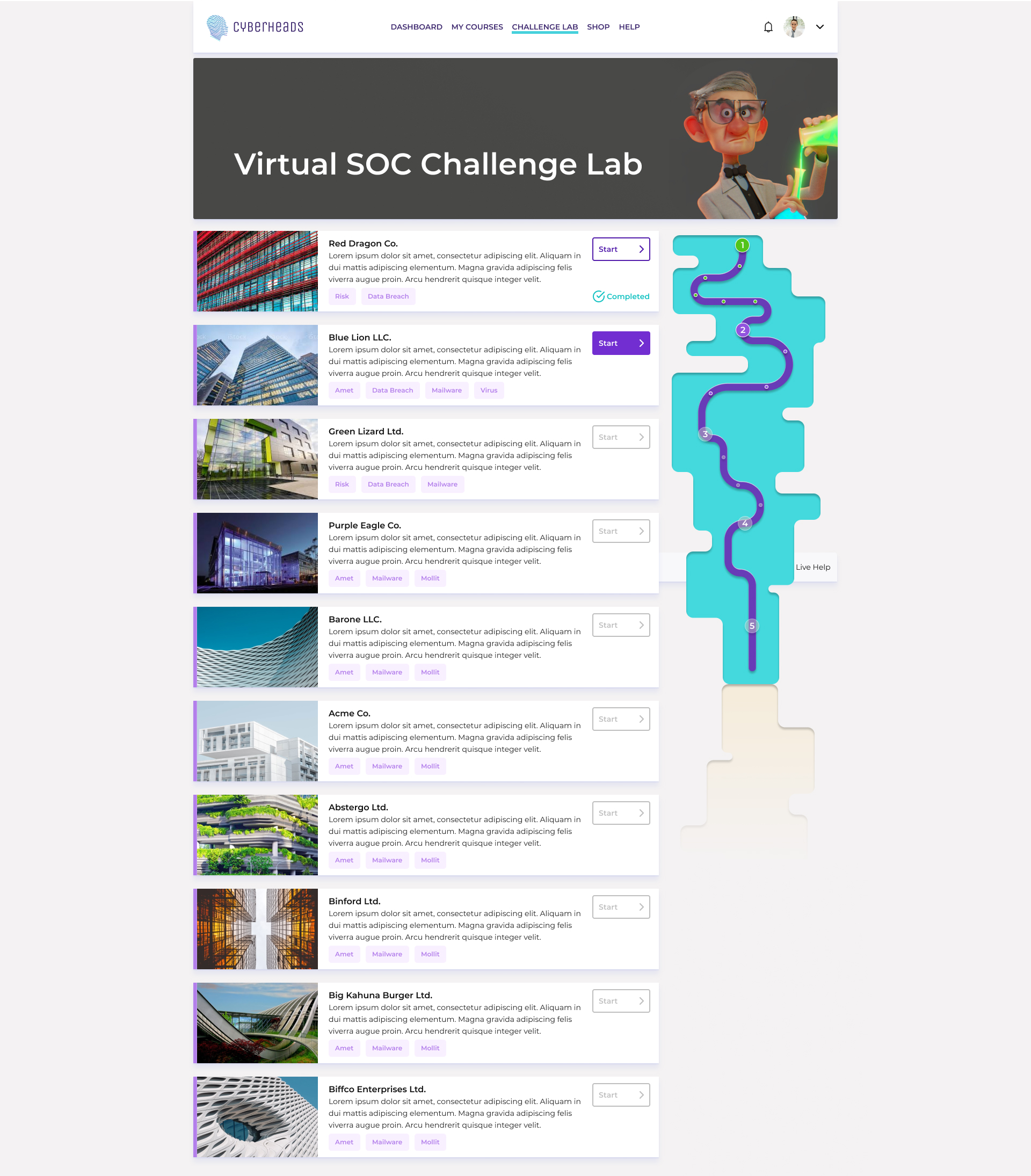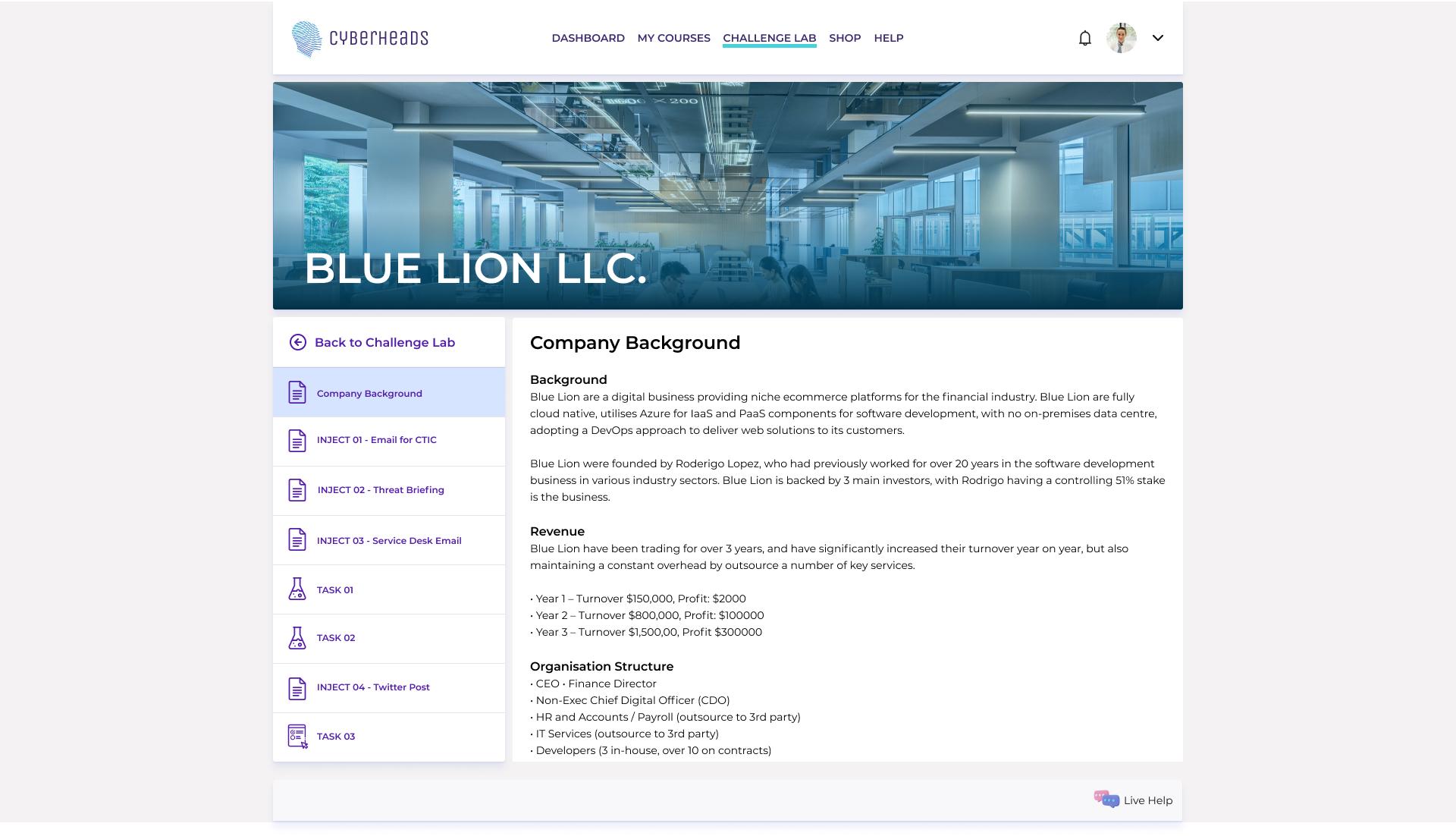Cyberheads – Cyber Security E-Learning Platform
Project Definition
Project Name: Cyberheads Cyber Security E-Learning Platform
Role: Lead UX/UI Designer
Tools Used: Figma, Sketch, InVision, UserTesting
The Cyberheads – Cyber Security E-Learning Platform incorporates gamification features to enhance engagement and motivation for learners pursuing certifications like CompTIA Security+, Microsoft SC200, and SOC Analyst roles. These gamification elements include achievements, leaderboards, and challenges that make the learning process more interactive and enjoyable. As learners progress through the courses, they can earn badges for completing modules, reach higher levels based on their performance, and compete with peers on leaderboards, adding a competitive edge to the experience.
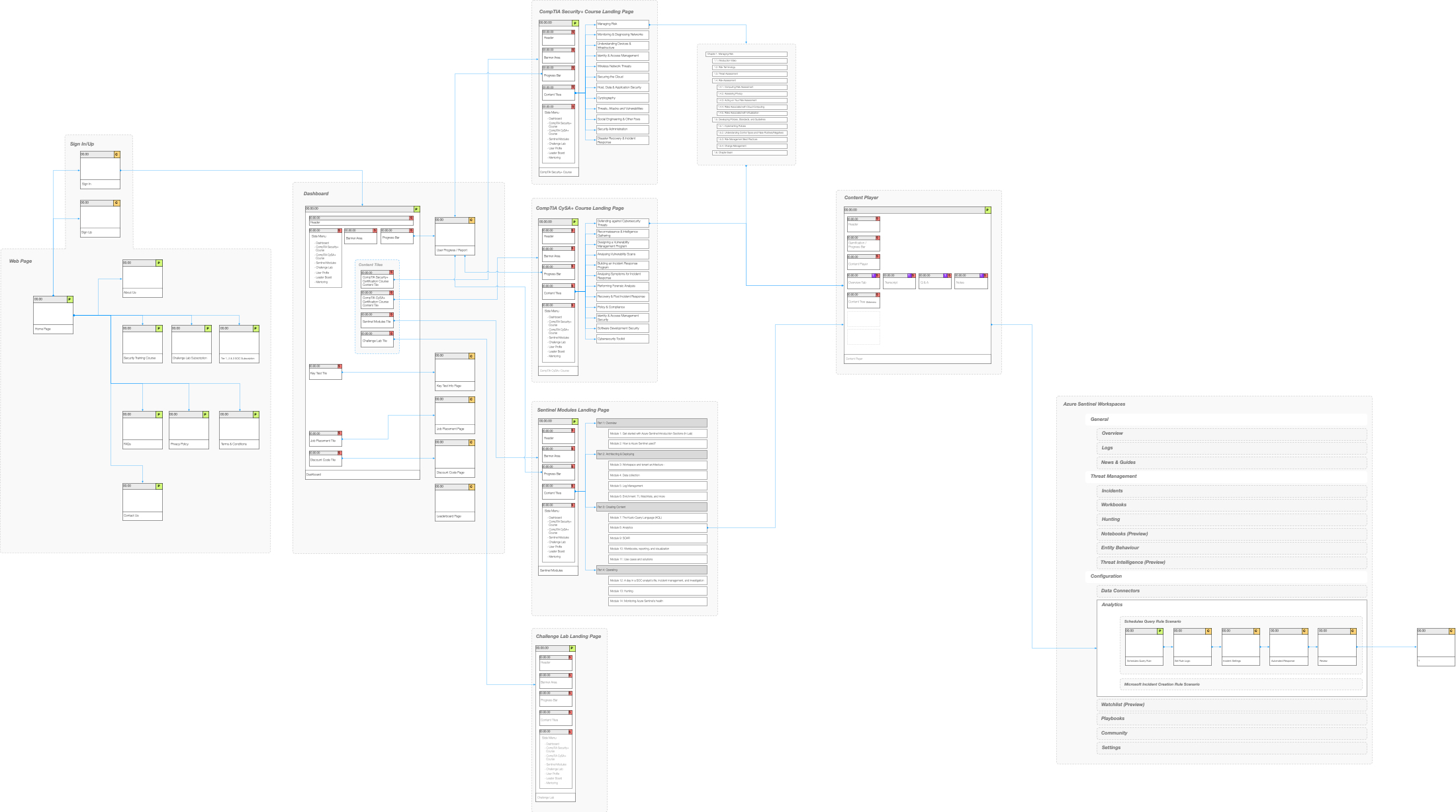
Problems and Solutions
Cybersecurity professionals often face difficulty staying engaged in lengthy certification training. The challenge was to create an interactive and motivating learning experience that fosters consistent progress and effective knowledge retention through gamified learning features.
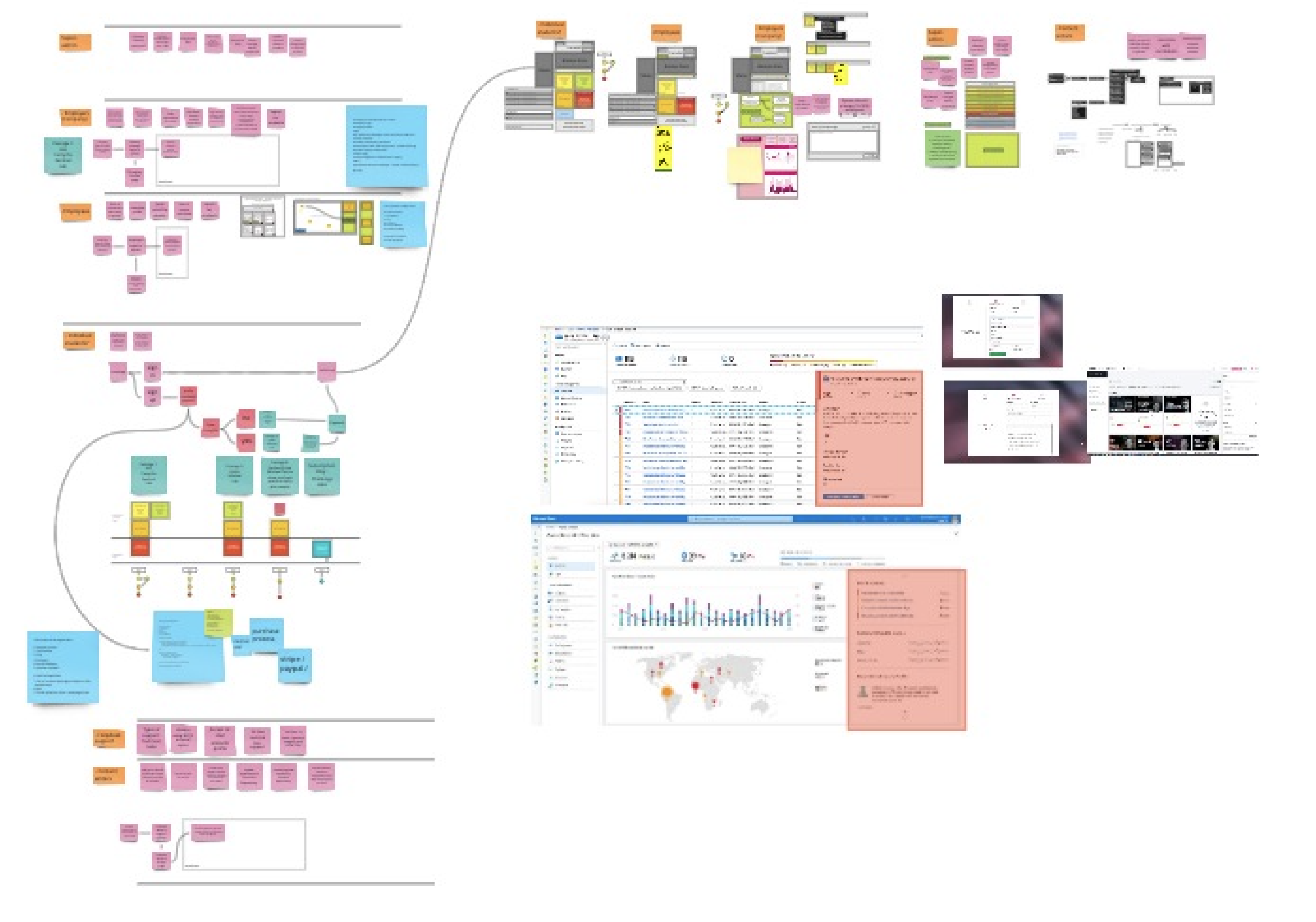
User Interviews, Surveys, and Competitive Analysis helped us to identify several key issues and opportunities with existing cyber security learning platforms:
- High dropout rates due to lack of engagement.
- No mechanisms to track or reward learner progress.
- Limited interactivity that could reinforce learning.
These insights informed the decision to integrate gamification, making learning more dynamic and rewarding.
The Approach
Usability Testing
We tested the platform’s designs with interactive prototypes to improve navigation and ensure consistency. The testing process included gamification elements and covered multiple scenarios, including embedded Azure Sentinel journeys.

Wireframes & Prototypes:
Low-fidelity wireframes were created to outline the learning flows, focusing on seamless gamification integration. High-fidelity prototypes were developed, iterating on feedback from user testing with learners in the cybersecurity field.
- Gamified Achievements: Badges, levels, and rewards were incorporated, allowing users to visually track progress.
- Leaderboards: Users could compare their progress with peers, adding a competitive edge to learning.
- Interactive Learning Modules: Challenges and quizzes with instant feedback were implemented to help learners reinforce concepts.

UI Design:
The design was modern and minimalistic, ensuring the gamified elements enhanced but didn’t overwhelm the learning process. Colours and iconography were carefully selected to guide users’ focus.


Impacts
The project is currently in the MVP stage and aims to significantly improve learner engagement, learning retention, and user satisfaction through the implementation of gamification in e-learning. The potential increase in learner engagement can be measured by consistently returning to complete courses. Additionally, the inclusion of real-life scenarios, quizzes and challenges can improve learning retention, where the gamified experience is a key factor.

